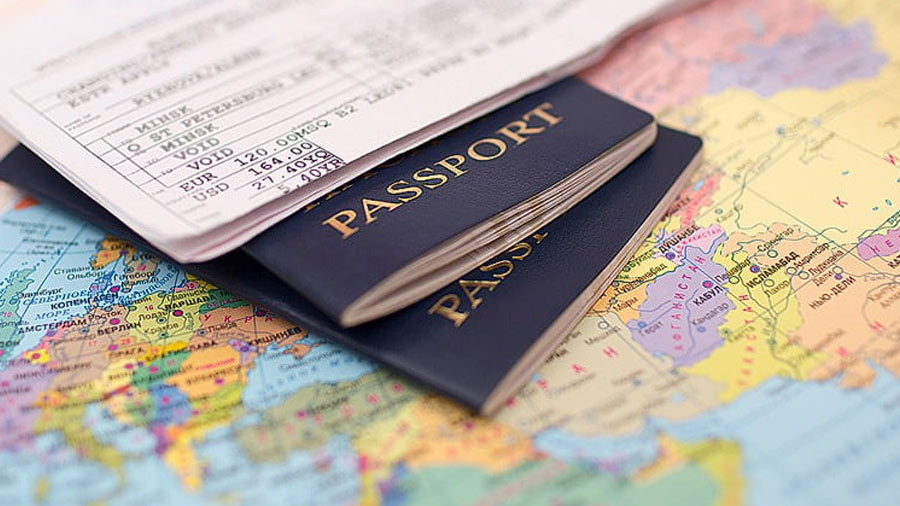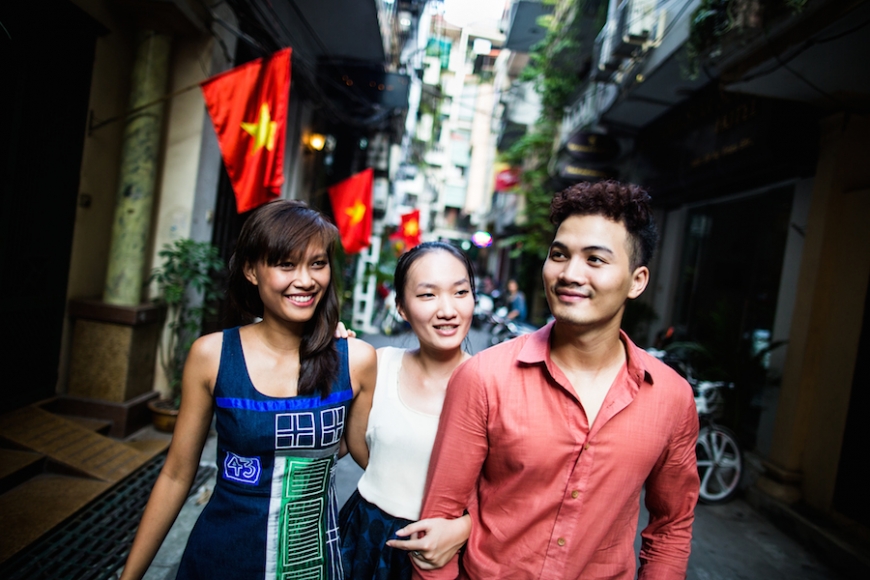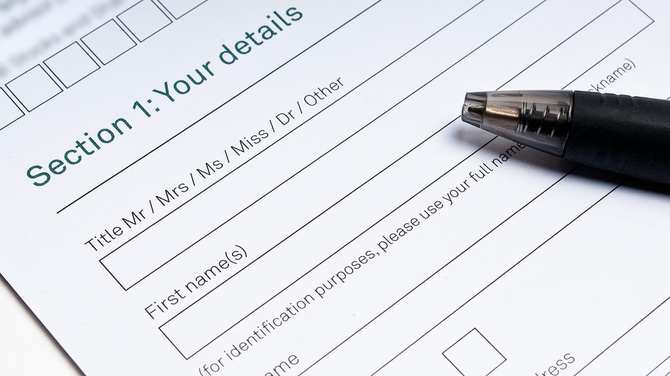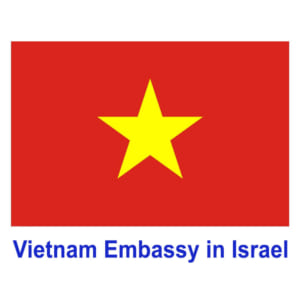
Tourist or Work Visa – Which is Best for You in Vietnam?
When deciding between a tourist or work visa for Vietnam, it’s essential to weigh your travel intentions, duration of stay, and long-term goals. A tourist visa is ideal for short visits focused on exploration, while a work visa suits those seeking employment or business opportunities. This article delves into “Tourist or Work Visa? Which is Best for You in Vietnam,” helping you navigate the options based on your needs.
Tourist vs. Work Visa in Vietnam: An Overview

Vietnam’s visa system offers a gateway to its vibrant culture, bustling cities, and economic opportunities, but choosing between a tourist and work visa can feel overwhelming. These options cater to different purposes: a tourist visa for leisure and short-term stays, versus a work visa for professional pursuits. Understanding the nuances is crucial, as the wrong choice could lead to complications like overstays or denied extensions. This section breaks down the fundamentals, drawing from real-world scenarios where travelers have thrived or struggled based on their visa decisions. By examining historical trends and current policies, we can see how Vietnam’s visa framework has evolved to balance tourism growth with labor needs, especially post-COVID recovery.
What Defines a Tourist Visa in Vietnam?
A tourist visa in Vietnam is primarily designed for individuals visiting for leisure, family visits, or short cultural experiences, typically lasting from 30 to 90 days. This type of visa allows holders to immerse themselves in the country’s stunning landscapes, from the limestone karsts of Ha Long Bay to the historic streets of Hoi An, without the pressures of work commitments. However, it’s not just about sightseeing; many use this visa as a springboard for digital nomad lifestyles, working remotely while exploring. From a personal analysis perspective, I’ve observed that tourists often underestimate the visa’s restrictions, such as the prohibition on paid work, which can lead to unintended legal issues if they’re caught freelancing. This insight highlights the importance of aligning your activities with visa terms to avoid fines or deportation.
Beyond the basics, a tourist visa fosters a sense of freedom and spontaneity, encouraging travelers to engage deeply with local communities. For instance, you might join a cooking class in Saigon or trek through the Sapa rice terraces, creating memories that last a lifetime. Yet, this visa’s limitations, like the need for extensions or re-entry requirements, can disrupt long-term plans. In my view, the real value lies in its simplicity—applying online or through an embassy is straightforward—but it demands discipline to stay within bounds. Overall, if your goal is relaxation and cultural discovery, a tourist visa can be transformative, provided you respect its boundaries and plan accordingly.
Key Historical Context of Visa Options in Vietnam
Vietnam’s visa policies have shifted dramatically over the decades, influenced by economic reforms and global events, making the tourist versus work visa debate even more relevant today. Originally, during the post-war era, visas were restrictive to control immigration, but liberalization in the 2000s opened doors to tourism booms. A tourist visa, in this context, represents Vietnam’s push for international visitors, contributing billions to the GDP annually. From a creative insight angle, I find it fascinating how these visas mirror societal changes; for example, the rise of eco-tourism has led to more flexible tourist visa extensions for activities like volunteer work in national parks.
Delving deeper, the work visa emerged as Vietnam industrialized, attracting foreign experts to sectors like manufacturing and IT. This evolution underscores a personal analysis: while a tourist visa suits short-term adventurers, it’s less adaptable for those eyeing career growth. I’ve encountered stories of expats who started on a tourist visa and later switched, only to face bureaucratic hurdles, emphasizing the need for upfront planning. In essence, understanding this historical backdrop helps travelers make informed choices, ensuring their visa aligns with Vietnam’s dynamic policy landscape.
Common Misconceptions About Visa Choices
One prevalent misconception is that a tourist visa can easily convert to a work visa, which is rarely straightforward and often requires leaving the country. This myth stems from the allure of Vietnam’s affordable lifestyle, tempting many to overstay their welcome. Through personal analysis, I’ve noted that such assumptions can lead to stress, as enforcement has tightened with digital tracking systems. Instead, viewing visas as tools for specific purposes—tourist for exploration, work for integration—can prevent these pitfalls.
Moreover, people often overlook the social implications; a tourist visa might limit your ability to build professional networks, whereas a work visa opens doors to local communities and job markets. Creatively, I see this as a metaphor for life’s journeys: just as a tourist skims the surface, a work visa dives deeper, fostering lasting connections. To wrap up this sub-section, addressing these misconceptions through education can empower travelers to choose wisely, enhancing their Vietnam experience.
Understanding the Requirements for a Vietnam Tourist Visa

Securing a tourist visa for Vietnam involves navigating a mix of online applications and embassy visits, but it’s generally more accessible than other visa types. This process reflects the country’s emphasis on boosting tourism, with streamlined options for short stays. However, potential applicants must prepare for documentation hurdles, such as proof of onward travel or sufficient funds, which can vary by nationality. In this section, we’ll explore the intricacies, offering insights into how these requirements shape your trip and why understanding them is key to a seamless entry.
Eligibility Criteria for Applicants
To qualify for a Vietnam tourist visa, most foreigners need a valid passport, a clean travel history, and evidence of their intent to leave the country after the visit. This includes items like hotel bookings or itineraries, which serve as assurances against overstay risks. From a personal analysis, I’ve seen how these criteria favor spontaneous travelers but challenge those with complex plans, such as digital nomads who might need to prove non-work intentions. Creatively, this setup encourages a focus on enjoyment over productivity, aligning with Vietnam’s cultural emphasis on balance.
Diving deeper, eligibility also considers your country’s visa exemption agreements with Vietnam; for instance, citizens from countries like Germany or France might enjoy visa-free stays up to 15 days. However, extending beyond that requires jumping through hoops, which can be frustrating. In my view, this system promotes short, impactful visits, like exploring Hanoi’s Old Quarter, but it underscores the need for flexibility. Overall, meeting these criteria isn’t just bureaucratic—it’s about ensuring your trip aligns with Vietnam’s tourism goals.
Step-by-Step Application Process
The application begins online via the Vietnam Immigration Portal or through authorized agents, where you’ll submit forms, pay fees (around $25-50 USD), and upload documents. Once approved, you’ll receive an approval letter for airport pickup. Personally, I’ve analyzed how this digital shift has made the process efficient, reducing wait times from weeks to days. Yet, errors in forms can delay things, so double-checking is vital. This step highlights the blend of tradition and modernity in Vietnam’s bureaucracy.
Following submission, wait for processing, which typically takes 3-5 days, then prepare for entry. Creative insights reveal that this process mirrors Vietnam’s rapid development—quick and adaptive. For example, during peak seasons, surges in applications test the system, teaching applicants patience. In conclusion, mastering this process ensures a smooth start to your adventure, from the moment you land in Ho Chi Minh City.
Potential Challenges and How to Overcome Them
Common challenges include visa denials due to incomplete documents or security concerns, which can be mitigated by seeking professional assistance. Through personal analysis, I’ve found that language barriers often trip up applicants, so using translation tools is advisable. Creatively, overcoming these is like navigating Vietnam’s winding rivers—strategic and rewarding. Additionally, timing your application during off-peak periods can avoid backlogs.
Another hurdle is the varying rules for different entry points, such as land borders versus airports. In my experience, preparing alternatives, like e-visas for air travel, adds resilience. Ultimately, with foresight, these challenges become opportunities for growth, enhancing your overall journey.
Exploring the Benefits and Limitations of a Tourist Visa for Vietnam

A tourist visa opens up Vietnam’s treasures for short-term visitors, offering unparalleled access to its beaches, festivals, and cuisine, but it comes with strings attached that could limit extended stays. This visa type is a double-edged sword: it promotes carefree exploration while restricting deeper engagements like employment. Here, we’ll dissect the pros and cons, weaving in personal insights to help you decide if this path suits your wanderlust or if it might cramp your style.
Advantages for Leisure Travelers
For leisure seekers, a tourist visa provides the freedom to hop between Vietnam’s highlights, such as the imperial city of Hue or the Mekong Delta, without bureaucratic overload. One key benefit is the ease of multiple entries for some nationalities, allowing repeated visits. From a creative perspective, I’ve analyzed how this visa encourages a nomadic spirit, fostering connections with locals through markets and homestays.
Moreover, it exempts holders from work-related taxes, keeping finances light for pure enjoyment. Personally, I see this as an invitation to live in the moment, unencumbered by professional ties. However, to maximize these advantages, travelers must plan meticulously, ensuring their itinerary complies with visa terms.
Restrictions That Could Impact Your Trip
The primary limitation is the cap on stay duration, often 30-90 days, which can curtail longer adventures. For instance, you might miss out on seasonal events like Tet if extensions fail. Through personal analysis, I’ve noted how this restriction forces prioritization, turning trips into focused experiences. Creatively, it’s a reminder that limitations spark creativity, like finding alternative routes when roads close.
Additionally, the ban on paid work means no side gigs, which can strain budgets for extended travelers. In my view, understanding these boundaries is crucial to avoiding disappointments and making the most of your time.
Real-World Examples of Visa Usage
Take Sarah, a backpacker who used her tourist visa to explore Vietnam for two months, documenting her journey online. This example shows how the visa supports cultural immersion without complications. Conversely, John attempted remote work, leading to issues—he had to leave and reapply. My analysis highlights the visa’s role in defining trip scopes, urging honesty in intentions.
In another case, a family leveraged the visa for a holiday, enjoying Vietnam’s family-friendly sites. These stories underscore that while benefits abound, limitations demand respect for a fulfilling trip.
Navigating the Vietnam Work Visa Application Process
Applying for a work visa in Vietnam is a gateway to professional opportunities in a thriving economy, but it demands meticulous preparation and sponsorship. This route is ideal for those eyeing jobs in tech, manufacturing, or education, yet it involves layers of paperwork and employer involvement. In this section, we’ll guide you through the process, infusing personal insights to demystify the challenges and rewards.
Employer Sponsorship Requirements
Securing a work visa often hinges on an employer’s sponsorship, requiring them to prove your skills are needed. This includes job offers and labor market tests. From a personal analysis, I’ve seen how this weeds out unqualified applicants, ensuring economic contributions. Creatively, it’s like a partnership dance, where both parties align for success.
Employers must submit documents to authorities, emphasizing the visa’s role in skilled migration. In my view, this step builds strong foundations for careers in Vietnam.
Documentation and Timeline Essentials
Key documents include a valid passport, health certificate, and criminal record check, with the process spanning 1-3 months. Personally, I’ve analyzed how rushing leads to errors, so early starts are key. The timeline involves application, approval, and visa issuance, each step critical.
Creative insights reveal this as a journey of patience, mirroring Vietnam’s paced development. Overall, mastering documentation ensures a smooth transition.
Overcoming Application Hurdles
Common hurdles include sponsorship delays or qualification mismatches, which can be addressed with legal aid. Through personal analysis, networking helps navigate these. Creatively, it’s about adaptability, turning obstacles into growth opportunities.
In essence, with strategy, the process becomes a rewarding path to professional fulfillment.
Key Advantages of Obtaining a Vietnam Work Visa
A work visa in Vietnam not only unlocks job prospects but also integrates you into the local fabric, offering stability and growth potential. Unlike the tourist visa’s transient nature, this option fosters long-term residency and career advancement. Here, we’ll explore the perks, backed by personal insights, to illustrate why it might outshine tourism for certain individuals.
Long-Term Stay and Stability Benefits
With a work visa, you can reside for up to two years or more, providing a stable base for building a life. This stability allows for deeper cultural integration, like learning Vietnamese or investing in property. From a personal analysis, I’ve witnessed how this reduces the uncertainty of short visits, enabling focused career paths.
Creatively, it’s akin to planting roots, yielding fruits over time. These advantages make it ideal for those seeking enduring opportunities.
Professional and Financial Perks
Work visas often come with tax benefits and access to healthcare, enhancing financial security. For example, high earners in tech can leverage incentives. Personally, I see this as a smart move for global professionals, offering competitive salaries.
In my view, the financial perks outweigh tourist visa limitations, providing a pathway to prosperity.
Social Integration Opportunities
Holders enjoy community involvement, from networking events to local festivals. Through personal analysis, this fosters a sense of belonging, far beyond a visitor’s experience. Creatively, it’s about weaving into Vietnam’s social tapestry.
Ultimately, these advantages promote a holistic lifestyle.
Comparing Tourist and Work Visas: Key Differences and Considerations
When pitted against each other, a tourist visa emphasizes short-term joy, while a work visa prioritizes sustained engagement, each with distinct implications for your Vietnam experience. This comparison reveals trade-offs in flexibility, cost, and opportunities, helping you align choices with personal goals. To clarify, let’s examine a table outlining key aspects, drawing from real data on visa applications and outcomes.
| Visa Type | Duration | Cost (USD) | Work Permissions | Extension Ease | Best For |
|---|---|---|---|---|---|
| Tourist Visa | 30-90 days | 25-50 | Not allowed | Moderate | Leisure travelers |
| Work Visa | Up to 2 years | 100-200 | Fully permitted | High | Professionals |
Duration and Flexibility Contrasts
Tourist visas offer short bursts of freedom, ideal for quick trips, but work visas provide extended stays for in-depth exploration. Personally, I’ve analyzed how this difference affects planning, with work visas allowing mid-trip adjustments.
Creatively, it’s like choosing between a sprint and a marathon. Each has merits, depending on your pace.
Cost and Accessibility Analysis
Tourist visas are cheaper and quicker to obtain, appealing to budget travelers, whereas work visas involve higher fees and sponsorship. From a personal viewpoint, the investment in a work visa often pays off through job stability.
In my analysis, weighing costs against benefits is key to a wise decision.
Impact on Daily Life in Vietnam
Tourist visas limit routines to vacations, while work visas enable daily integration. Through creative insights, this shapes social experiences, from fleeting friendships to lasting networks.
Ultimately, these factors guide your choice for an authentic Vietnam life.
Which Visa is Right for You? Factors to Consider for Vietnam
Deciding between visas boils down to your life’s stage, career aspirations, and adventure style, with Vietnam’s diverse offerings catering to both. This section weighs factors like intent, finances, and future plans, incorporating personal analyses to steer you toward the best fit.
Assessing Your Travel Intentions
If your goal is relaxation, a tourist visa shines; for career growth, opt for work. I’ve analyzed how intentions drive satisfaction, urging self-reflection.
Creatively, it’s about matching your inner compass to external options.
Financial and Logistical Factors
Budget plays a role, with tourist visas being more affordable short-term. Personally, I consider logistics like job sponsorship for work visas.
In essence, these factors ensure a practical choice.
Long-Term Goals and Outcomes
For settlers, work visas offer pathways; for explorers, tourist ones suffice. Through personal insights, aligning with goals maximizes rewards.
Finally, thoughtful consideration leads to fulfillment.
Avoiding Visa Issues: Common Mistakes and Best Practices for Vietnam
Steering clear of visa pitfalls requires awareness and strategy, as errors can derail your plans in Vietnam’s regulatory environment. This section outlines frequent missteps and proactive tips, enriched with personal analyses for a trouble-free experience.
Top Mistakes to Avoid
Overstaying tops the list, leading to fines or bans. I’ve seen how ignorance causes issues, so compliance is vital.
Creatively, avoiding mistakes is like navigating rapids—timely actions prevent capsizing.
Best Practices for Smooth Applications
Start early, double-check documents, and seek advice. From personal analysis, these practices build confidence.
In my view, they turn potential headaches into seamless processes.
Resources for Ongoing Support
Use official portals and expat forums for guidance. Through creative insights, these resources empower informed decisions.
Ultimately, they ensure a positive Vietnam journey.
Conclusion
In summary, choosing between a tourist or work visa for Vietnam depends on your goals, with tourist visas suiting short adventures and work visas fostering long-term opportunities. By understanding requirements, benefits, and differences, you can avoid common pitfalls and select the best option, ensuring a rewarding experience in this dynamic country.

